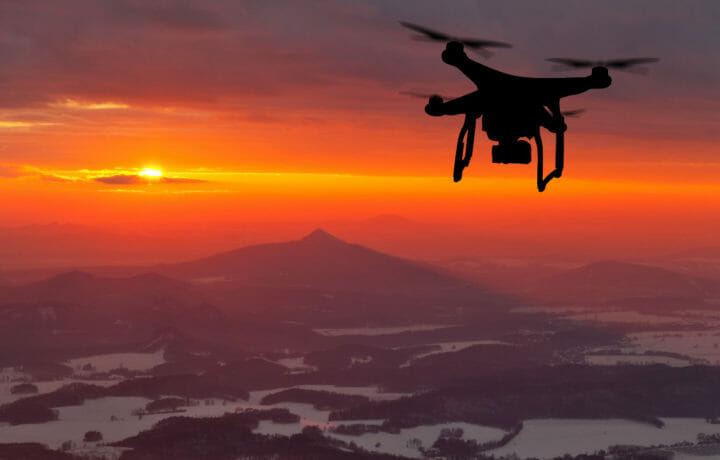As Ukraine’s counteroffensive struggles on the ground, it is pounding Russia by airborne and waterborne drones. High-profile attacks linked to Kyiv indicate a shift in Ukraine’s vow to “return” the war to Russia. Recent images of a damaged Russian naval ships, oil tanker, and Moscow skyscrapers have spread like wildfire in the news and on social media. While acknowledging the attacks, Russia continues to downplay the damages.
The Ukrainian War is a proving ground for the deployment of new technologies and tactics. The Ukraine war has seen an acceleration of drone technological development by both sides, creating the next evolution in modern warfare. However, the Ukrainian military continues to exploit their successful usage of inexpensive drones against a world superpower.
Amazingly, cheap hobby drones, some made from carboard, are now hunting tanks worth millions. Over the weekend, a first-person view (FPV) $500 drone fitted with explosives, broadcasted the destruction of an advanced Russian T-90M tank worth an estimated $4.5 million. Ukraine is tipping the balance in its favor in the war of drones, and Kyiv recently warned Moscow there are more attacks to come.
Large and expensive military-grade airborne drones used to strike terrorist leaders such as the Predator or the Reaper are no longer high demand items by the Ukrainian military. U.S. drones previously purchased by Kyiv were too expensive to deploy at the scale necessary. American defense contractors advanced drones have a starting price of around $16,000, when selling to governments and business customers.
Why is the Ukraine War Drone Usage Different?
First, both sides are relying on cheap commercially available drones to provide battlefield intelligence, reconnaissance and artillery targeting. Drones identify targets and send coordinates to the artillery to direct fire. Smaller inexpensive drones are now being used to strike the enemy as well. These cheaper drones have been modified to carry light munitions such as a grenade. Not unlike WWI, trenches have been developed on the Ukrainian battlefield. Now drones are flying overhead and dropping grenades from above.
Another major difference, inexpensive drones are typically not recovered and are considered disposable. Ukraine is using a massive array of drones. With Ukraine losing an estimated 5-10,000 drones a month, the military needs dumb and cheap drones. Slow, and low flying, small drones are not vulnerable to anti-aircraft. In fact, most losses are due to Russian electronic warfare (EW). However, rather than investing in anti-EW protection for the drones, Ukraine is accepting their losses and buying very basic drones – accepting quantity over quality.
Cheap flying drones like the Chinese DJI Mavic have several models selling on Amazon for less than a $1,000. High-end models by the same company cost a couple thousand dollars and are being modified to pinpoint artillery targets, provide alerts for a ground attack, drop improvised explosives and capture video for propaganda. Recent reports show that both sides may modify and use Chinese-made drones.
China’s Desire to Assist
In 2022, Kyiv appealed to DJI, asking them to stop selling their drones to the Russian Ministry of Defense, accusing Russia of targeting missile attacks. Even though Chinese and Russian governments have a “no-limits” friendship, China always tries to remain neutral regarding the Ukraine war in the public eye. The Chinese government is now concerned about the export and conversion of Chinese made drones for military usage. Two weeks ago, China imposed restrictions on long-range civilian drone export, citing Russia’s war in Ukraine and concern that drones might be converted to military use.
Will Chinese Restrictions Cause Problems?
Ukraine is already receiving and using Australian SYPAQ supplied waxed cardboard drones. The drones are used to deliver supplies to troops and conduct surveillance of Russian positions. Inexpensive and shipped in quick self-assembly flatpacks, the Corvo Precision Payload Delivery System (PPDS) is technically used for logistics deliveries of payloads up to 11 pounds. Easily modified, the drone is ideal for use in the Ukrainian war to deliver critical supplies to the front line.
Additionally, Germany announced that Rheinmetall will supply Ukraine with the Luna New Generation unmanned drone system later this year. The drone will provide a flight time of 12+ hours, with 100 kilometers of data transmission.




